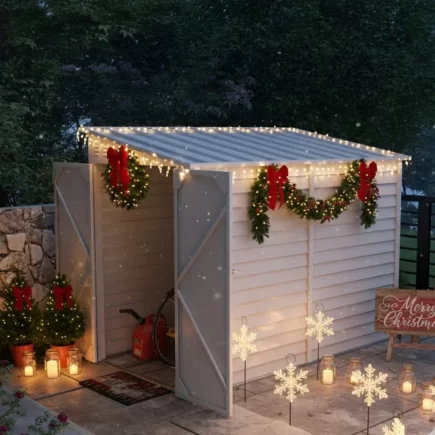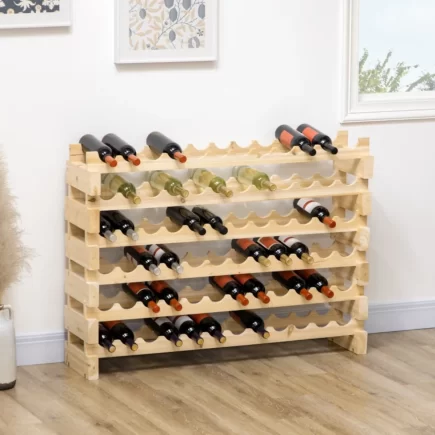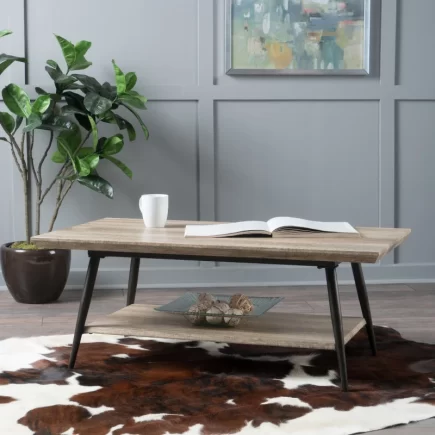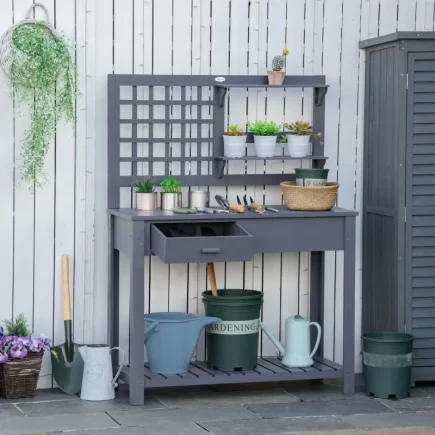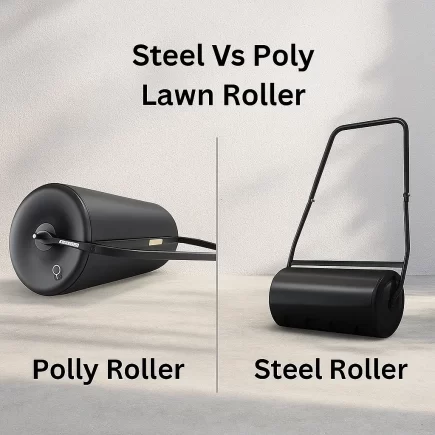A garden shed is often seen as a storage solution for tools, seasonal items, or even a cozy hobby space. However, many people overlook the importance of insulating their sheds. Insulating your garden shed is an investment that not only enhances its comfort but also extends its longevity. By insulating, you can transform a seasonal structure into a year-round space suitable for various uses, such as a workshop, art studio, or home office.

Common Types of Insulation
Here are the most common types of insulation used for garden sheds:
- Batt Insulation
Batt insulation consists of large, pre-cut sections of fibrous material, typically fiberglass, although mineral wool and cotton (denim) are also options. It’s designed to fit between the studs or joists in the walls and ceiling of a shed.
- Spray Foam Insulation
Spray foam insulation is a type of polyurethane foam that is applied as a liquid and then expands to form a solid, airtight, and insulating barrier. It adheres directly to surfaces and hardens into a foam that fills all gaps, cracks, and voids.
- Foam Board Insulation
Foam board insulation (also known as rigid foam) is made from materials like polystyrene, polyisocyanurate, or polyurethane. The boards are typically available in large, flat sheets that can be cut to size and fitted into the walls, ceiling, or floor of the shed.
Eco-Friendly Options: Natural and Sustainable Insulation Materials
For those who prefer sustainable materials, natural insulation options like sheep wool, recycled cotton, and straw offer excellent thermal and moisture-regulating properties. These materials are biodegradable and environmentally friendly but may come at a higher cost.

Step-by-Step Guide to Insulating Your Shed
Preparation: Measuring the Shed and Checking for Moisture or Leaks
Before you start installing insulation, take some essential preparatory steps:
- Measure the Walls, Roof, and Floor
This will help you determine how much insulation material you need. Be sure to measure the studs and rafters to get accurate measurements.
- Check for Leaks
Look for any gaps, cracks, or areas where moisture could seep in. Seal these areas before you begin insulating to ensure maximum efficiency.
Installing Batt Insulation: Easy-to-Follow Process for DIY Projects
Installing batt insulation can be a great DIY project that helps improve the energy efficiency of your home. Here’s a detailed, step-by-step process for installing batt insulation in walls, ceilings, or floors:
Step 1: Gather Tools and Materials
Before you start, ensure you have all the necessary tools and materials:
- Batt Insulation (fiberglass or mineral wool)
- Utility Knife
- Stapler or Staple Gun (with staples for insulation)
- Tape Measure
- Razor Blade or Scissors (for cutting paper-backed insulation)
- Tape or Sealant (to seal the edges)
- Gloves (to protect your hands from fibers)
- Dust Mask (to avoid inhaling fibers)
- Safety Glasses

Step 2: Measure the Space Between Studs
To begin, measure the space between the studs (vertical supports in the wall). Batt insulation typically comes in rolls or pre-cut sections that fit between 16-inch or 24-inch studs. Knowing the stud spacing will help you cut the insulation accurately.
- Use a tape measure to find the width of each cavity between the studs.
- If your batt insulation is in large sheets, measure the length and width of the cavity to determine the correct size.
Step 3: Cut the Batt Insulation to Size
Now that you’ve measured the space between studs, it’s time to cut your batt insulation. If your insulation isn’t pre-cut, follow these steps:
- Lay out the batt insulation on a flat surface like a workbench or a clean area on the floor.
- Use a utility knife to cut the insulation to fit the width of the cavity. Keep the blade steady and make sure the insulation is snug but not too tight. It should fill the cavity completely to ensure no gaps.
- If you’re using paper-backed insulation, be careful when cutting around the paper. For a cleaner edge, use scissors or a razor blade to trim the backing.
Tip: Always wear gloves and a dust mask to protect yourself from fiberglass particles or irritants in the insulation material.
Step 4: Install the Insulation
Now comes the fun part, installing the insulation between the studs.
- Position the batt insulation carefully in the wall cavity, making sure it fits snugly from top to bottom. The paper side (if present) should face inward toward the living space to act as a vapor barrier.
- Staple or secure the insulation to the studs. Use a stapler or staple gun to attach the insulation to the studs along both sides of the cavity. Ensure the staples go through the paper (if there is one) to hold it firmly in place. Don’t overstretch the insulation, leave a little slack to ensure it doesn’t get compressed too much.
- If the batt insulation doesn’t have paper backing, simply press it into place and ensure it stays secure. You can use a staple gun or small nails to keep it in position.

Step 5: Seal the Gaps
Once you’ve installed the insulation, it’s important to ensure there are no gaps that could let air escape.
- Check for any visible gaps between the edges of the batt insulation and the studs. Sometimes, the insulation can shift or leave small openings around the edges.
- Seal any gaps using tape or sealant. You can use a high-quality foil tape, acoustic sealant, or caulk to fill any cracks. This step is especially important if you’re working with vapor-barrier insulation, as it helps maintain the integrity of the barrier.
- If you’re using insulation in a ceiling or floor application, be sure to seal any areas where the insulation might not be fully snug. Airflow through these gaps can reduce the insulation’s effectiveness.
Step 6: Finish the Wall or Ceiling
Once the insulation is in place and gaps are sealed, you can proceed with the final steps of finishing your wall or ceiling.
- If you’re installing in a wall, continue with drywall installation.
- For ceilings or floors, ensure the insulation is fully covered with the appropriate materials, such as drywall, plywood, or flooring.
Using Spray Foam: Best Practices for Quick and Effective Application
Using spray foam for insulation is a fast and effective way to seal gaps, improve energy efficiency, and reduce noise. Here’s a detailed, step-by-step guide on how to apply spray foam properly:
Step 1: Gather Tools and Materials
Make sure you have everything you need before beginning the spray foam application process:
- Spray Foam Insulation Kit (open-cell or closed-cell, depending on your needs)
- Spray Foam Gun (usually comes with the kit)
- Protective Gear (gloves, goggles, dust mask, and coveralls)
- Plastic Sheeting or Drop Cloths (to cover surfaces)
- Utility Knife or Foam Cutter (for trimming excess foam)
- Masking Tape (optional, for extra protection around windows/vents)
- Tarp or Old Towels (for additional floor protection)
- Ladder (if spraying on ceilings or high areas)

Step 2: Prepare the Area
Preparation is key to ensure an effective and clean spray foam application.
- Clear the Area
Remove any furniture, tools, or items that might obstruct your workspace. This will give you easy access to all the surfaces you need to insulate.
- Cover Windows, Vents, and Openings
Use plastic sheeting, drop cloths, or masking tape to cover windows, vents, and any other areas where you don’t want foam to stick. Spray foam can be very difficult to remove once it dries, so it’s better to take precautionary measures.
- Protect the Floor
Lay down tarp or old towels on the floor to catch any overspray or drips from the foam. This will prevent your floor from getting damaged.
- Ventilate the Area
Open any nearby windows (if possible) and ensure proper airflow. Spray foam can have a strong odor, so proper ventilation helps with the fumes.
Step 3: Prepare the Spray Foam Canister
Next, prepare your spray foam for application.
- Attach the Nozzle or Gun:
If you’re using a spray foam gun, attach the appropriate nozzle to the foam canister. Ensure that it’s securely attached to prevent leaks or messes.
- Shake the Canister
Shake the canister (or cans if multiple) vigorously for a minute to ensure the foam mixes properly. This step is important for even consistency and proper expansion during application.
- Check the Pressure
Ensure the pressure setting on the spray foam gun or canister is correct according to the manufacturer’s instructions.
Step 4: Spray the Foam
Now, begin applying the foam to the surfaces.
- Start at the Top
Begin spraying the foam at the top of the wall or ceiling (if you’re insulating a shed or large space). This will allow any foam that drips or falls to be caught later in the process.
- Spray Between Studs and Rafters
Hold the spray foam gun about 12-18 inches away from the surface you’re applying to. Start spraying the foam between the studs and rafters, aiming for even coverage.
- Apply in Layers
Apply the foam in thin layers. Start with a light first pass, allowing it to dry and expand before applying additional layers. Do not apply too thick of a layer at once, foam expands and can overflow if applied too thickly.
- Cover All Gaps and Cracks
Focus on covering all areas, including any gaps, seams, or cracks in the walls, ceiling, or floor. Spray foam works best when it fills every small void.
- Avoid Over-Spraying
If you’re insulating areas with a lot of open space (like large rafters), don’t over-spray. You want to avoid foam getting into areas you don’t intend to insulate (such as electrical outlets, vents, etc.).
Tip: If you are using closed-cell foam (denser foam), it will provide more insulation but may require more time to apply, whereas open-cell foam expands more and is quicker to apply but may not be as dense.

Step 5: Allow the Foam to Dry and Cure
After you’ve applied the first layer of foam, it’s important to let it dry before adding more layers.
- Wait for the Foam to Dry
Allow the first pass of foam to dry completely. The drying time can vary depending on the foam type and the thickness applied, but typically it takes 1-2 hours to become tack-free.
- Check the Foam’s Expansion
The foam will continue to expand as it dries. Ensure the foam is expanding evenly without significant gaps or unevenness.
Step 6: Apply Additional Layers (If Needed)
If you’re insulating an area with deep gaps, you may need to apply multiple layers of foam to fill the space.
- Apply the Second Layer
After the first layer has dried and expanded, you can spray another layer on top. Repeat the process, keeping the spray thin and even.
- Layer-by-Layer Application
If you need multiple layers, continue applying them one at a time, allowing each layer to dry before proceeding.
Step 7: Trim Excess Foam
Once the foam has fully cured and dried, you’ll need to trim any excess foam that may have spilled over the edges.
- Use a Utility Knife or Foam Cutter
Carefully trim the foam along the edges to ensure a clean, smooth finish. If foam has dripped onto the floor or other surfaces, trim it as well.
- Trim to Wall Surface
For a neat finish, trim the foam flush with the surface of the wall, ceiling, or rafters. If there are areas where the foam has expanded beyond the intended space, use the utility knife to gently remove it.
Tip: Be sure to cut slowly and carefully to avoid damaging the insulation layer underneath the foam. You can use a saw or foam scraper for larger areas if needed.
Foam Board Installation: Step-by-Step Instructions for a Secure and Tight Fit
Foam board insulation is a great option for creating a well-insulated, energy-efficient environment. Here’s a detailed, step-by-step guide for installing foam board insulation with a secure and tight fit:
Step 1: Gather Tools and Materials
Before starting the installation, make sure you have everything you need:
- Foam Board Insulation (cut to the appropriate size for your space)
- Measuring Tape
- Utility Knife or Saw (for cutting the foam board)
- Adhesive (e.g., Liquid Nails)
- Caulk or Expanding Foam (to seal the edges)
- Caulking Gun (for the caulk or expanding foam)
- Gloves (for protection during handling)
- Safety Glasses (optional but recommended)
- Pencil or Marker (for marking measurements)
- Ladder (if installing on high areas)

Step 2: Measure and Cut the Foam Board
Proper cutting is essential to ensure a tight and secure fit between the studs.
- Measure the Space
Use a measuring tape to find the exact distance between the studs in the wall. Record the measurements to ensure your foam board fits snugly between the studs.
- For walls with studs spaced 16 inches apart, the foam board will need to fit precisely between them.
- If you’re insulating a large area, you may need to cut multiple pieces of foam board.
- Mark the Foam Board
Use a pencil or marker to mark where you’ll cut the foam board. Ensure the foam board is slightly smaller than the gap between the studs, allowing for easy installation without forcing the material into place.
- Cut the Foam Board
- Use a utility knife for thinner foam boards, or a saw (e.g., a handsaw or jigsaw) for thicker boards.
- Score the foam board along the marked lines, then snap the board at the scored edge. If you’re using a saw, make sure to cut gently to avoid damaging the foam.
- Always cut the foam board outside if possible, as the dust can irritate your lungs and skin. Wear gloves for added protection.
Step 3: Apply Adhesive to the Foam Board
Adhesive is used to secure the foam board to the studs, ensuring a tight fit.
- Choose the Adhesive
Use an adhesive like Liquid Nails or another construction adhesive recommended by the manufacturer. Be sure to select an adhesive that’s suitable for foam board insulation.
- Apply the Adhesive
- Using a caulking gun, apply a generous layer of adhesive to the back of the foam board.
- Apply a zigzag pattern across the entire back surface of the foam board to ensure complete coverage.
- Be sure to focus on the edges and corners to ensure the board sticks firmly when pressed into place.
Tip: Avoid applying too much adhesive, as it can overflow and make the installation messier.
Step 4: Install the Foam Board
Now it’s time to install the foam board and secure it to the wall.
- Position the Foam Board
- Carefully lift the foam board and position it against the wall, making sure it aligns properly with the studs.
- Press the foam board firmly into place, ensuring that it fits snugly between the studs.
- If the foam board is heavy or large, you may need assistance to hold it in place while securing it.
- Press and Hold
Press down gently but firmly on the foam board to ensure the adhesive bonds with the wall. Hold it in place for a minute or two, depending on the adhesive’s curing time. Some adhesives may need longer to bond.
- Continue With Additional Panels
If you’re installing multiple panels of foam board, repeat the process for each section. Ensure that the boards are aligned properly and tightly together to avoid gaps.

Step 5: Seal the Edges
Sealing the edges ensures no air leaks and prevents the foam board from shifting over time.
- Inspect the Edges
Check around the perimeter of each foam board for any visible gaps or cracks where air might pass through. Even small gaps can reduce the insulation’s effectiveness.
- Apply Expanding Foam or Caulk
For larger gaps, use expanding foam to fill in the voids. Spray the foam into the gaps, allowing it to expand and fill the space. Be sure to wipe away any excess foam before it hardens.
- Smooth the Sealant
Once the expanding foam or caulk has been applied, use your finger or a tool to smooth it out and ensure a clean seal. Be careful not to get foam or caulk on the foam board itself.
Tip: Expanding foam can expand significantly, so only apply a small amount and let it spread naturally into the gaps.
Step 6: Clean Up and Finish
After installing the foam board, it’s time to finish up the installation.
- Clean Off Excess Foam or Caulk
If any excess foam or caulk has spilled onto the foam board or surrounding surfaces, clean it off before it dries. Once the material hardens, it can be difficult to remove.
- Allow Adhesive and Sealant to Dry
Let the adhesive and sealant cure according to the manufacturer’s instructions. Typically, this will take anywhere from a few hours to a day, depending on the product used.
- Finish the Surface
If you are covering the foam board with drywall or another material, proceed with the next steps of your project (e.g., securing drywall over the foam board or adding finishing touches to the room).
Additional Tips for a Successful Foam Board Installation
- Ensure Proper Ventilation
When working with adhesives, foam, or sealants, ensure that the area is well-ventilated to reduce inhaling fumes.
- Use Foam Board with a Vapor Barrier
If you’re insulating in areas prone to moisture (such as basements), look for foam board that includes a vapor barrier to prevent moisture buildup.

- Consider R-Value
When selecting foam boards, consider their R-value (thermal resistance) to determine the level of insulation you need for your climate and space.
Sealing Gaps and Cracks: Ensuring an Airtight Seal for Maximum Efficiency
After installing insulation, it’s crucial to seal all gaps to prevent air leaks:
- Use weatherstripping around doors and windows.
- Apply caulk around electrical outlets and fixtures.
- Ensure there is no space between the insulation material and the shed walls.
Moisture Control and Ventilation
Moisture is a major concern in garden sheds, especially in areas with high humidity. Insulation helps keep the temperature stable, but moisture can still cause issues like mold and mildew.

To prevent this:
- Use vapor barriers or moisture-resistant materials in areas prone to dampness.
- Ensure proper ventilation to allow moisture to escape.

Preventing Dampness with Vapor Barriers and Moisture-Resistant Materials
- Vapor Barriers
These materials are crucial for preventing moisture from entering the insulation. They should be placed on the interior side of the walls.
- Moisture-Resistant Insulation
Foam board and spray foam insulation are great choices for moisture-prone areas.
Ventilation: Why Proper Airflow Is Crucial to Maintain Insulation Effectiveness
Even well-insulated sheds need proper ventilation to prevent condensation buildup, which can lead to mold growth. Adding vents in the roof and walls ensures fresh air circulation and reduces moisture buildup.
Common Issues and How to Avoid Them

How to Handle Gaps and Poor Insulation Sealing
Ensure that every gap is sealed properly, as any leak will reduce the effectiveness of your insulation. Use caulk or foam to seal any cracks, especially around windows, doors, and electrical outlets.
Avoiding Common DIY Mistakes When Installing Insulation
- Measure twice, cut once, accurate measurements are essential.
- Ensure the insulation is snug and secure to avoid air gaps.
- Wear proper safety gear when handling materials like fiberglass.
Tips for Handling Special Areas (e.g., electrical wiring, windows, and doors)
- Electrical Wiring
Install insulation around electrical wires carefully to avoid damage or interference.
- Windows and Doors
Use weatherstripping and sealant to prevent drafts.

The Long-Term Benefits of Insulating Your Shed
Insulating your garden shed is a smart investment that not only improves comfort but also enhances energy efficiency and prolongs the life of your shed. Whether you’re looking to create a comfortable hobby space, storage area, or a home office, insulation makes your shed a year-round, usable space. By choosing the right materials, following proper installation steps, and managing moisture, you can maximize your shed’s potential and enjoy it for many years to come.
For more information and a wide selection of garden sheds, visit our Sheds Collection at Aosom.
FAQS
1. How can I stop moisture from building up inside my shed after insulation?
To prevent moisture buildup, ensure your shed is properly sealed and use vapor barriers along the walls and floor. Additionally, installing vents or a dehumidifier will help maintain airflow and keep humidity levels low.
2. Can I insulate my shed after it has already been built?
Yes, you can insulate an existing shed, but it requires careful planning. You’ll need to remove the internal cladding, measure the space, and install insulation materials like foam boards or spray foam to ensure a snug fit.
3. What should I do if my shed is poorly ventilated after insulation?
If ventilation is inadequate, consider adding vents to the roof or walls to allow air to circulate. This will help prevent condensation buildup and mold growth, especially in more humid climates.
4. Can I use insulation to soundproof my garden shed?
Yes, insulation can help reduce noise. Materials like fiberglass batt or foam board are effective at dampening sound, making your shed quieter both inside and out, especially for workshops or home offices.
5. How do I deal with electrical wires and outlets when insulating my shed?
When insulating around electrical wires and outlets, leave enough space to prevent the insulation from interfering. Use a utility knife to carefully cut the insulation, and ensure all gaps are sealed to avoid heat loss or air leaks.




